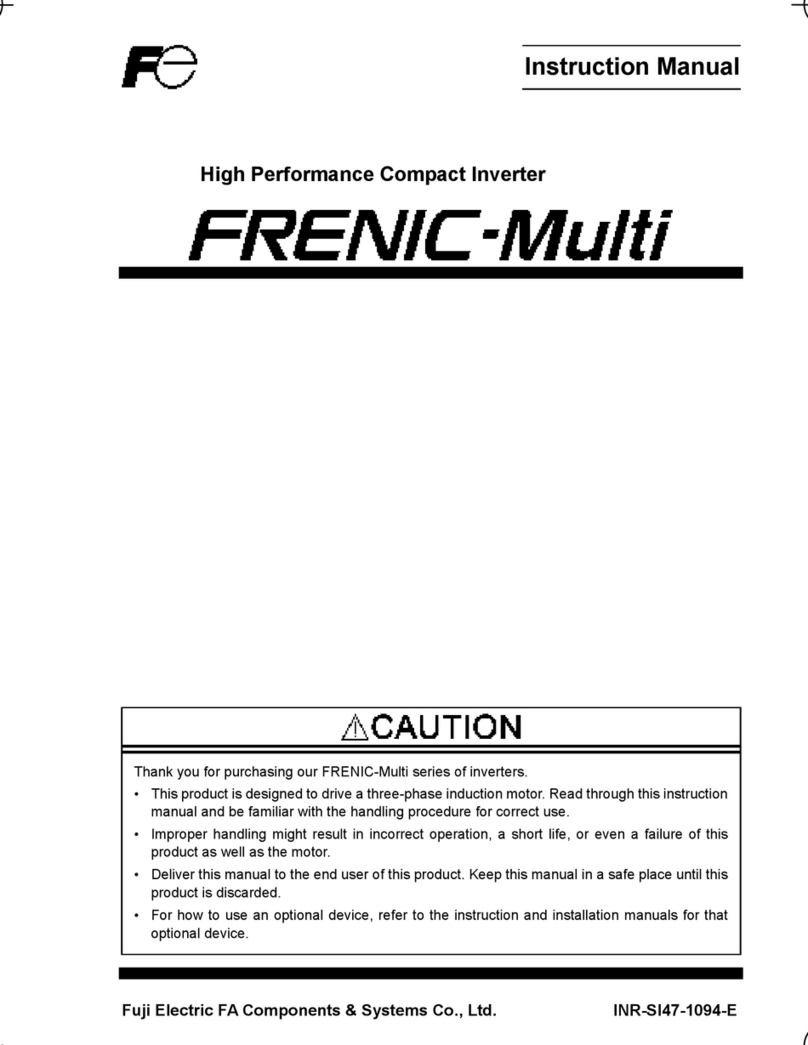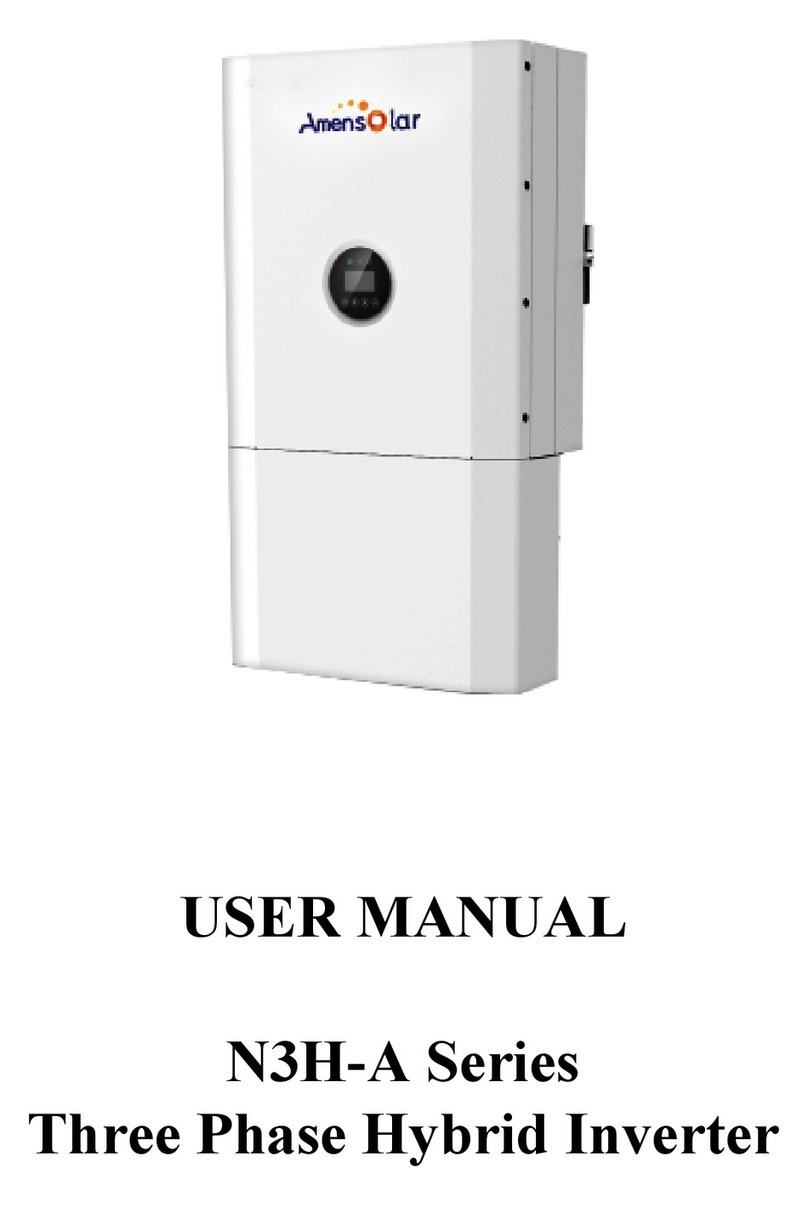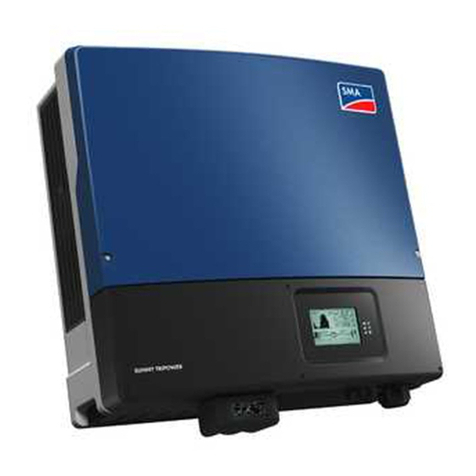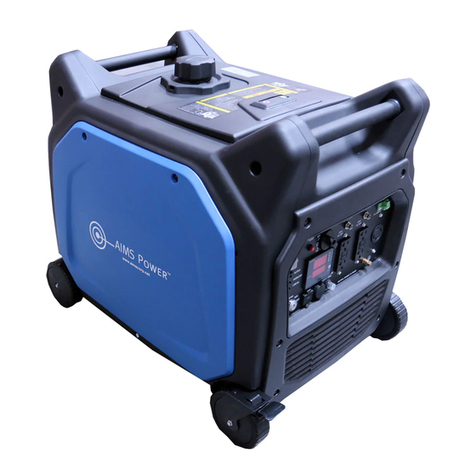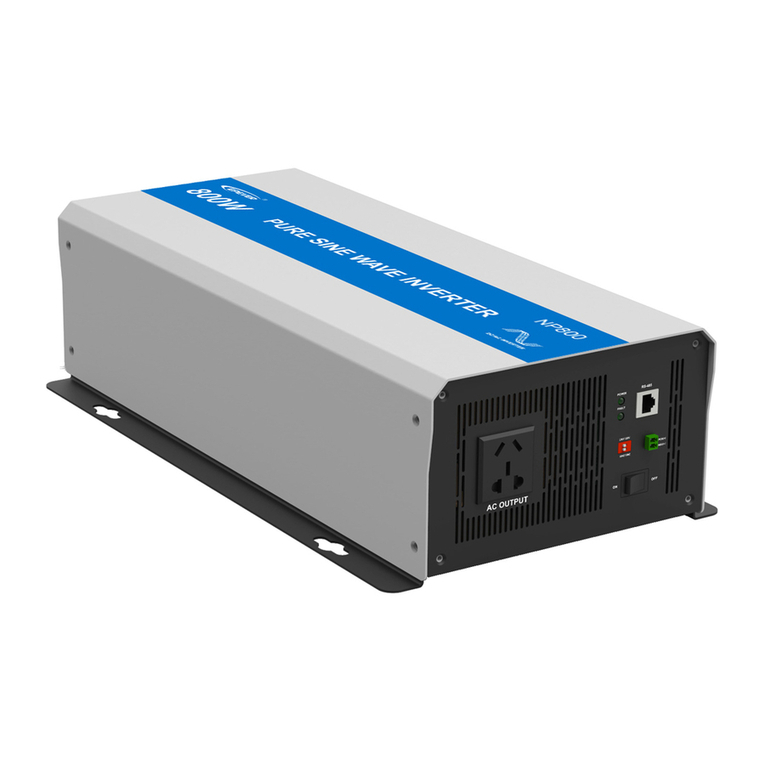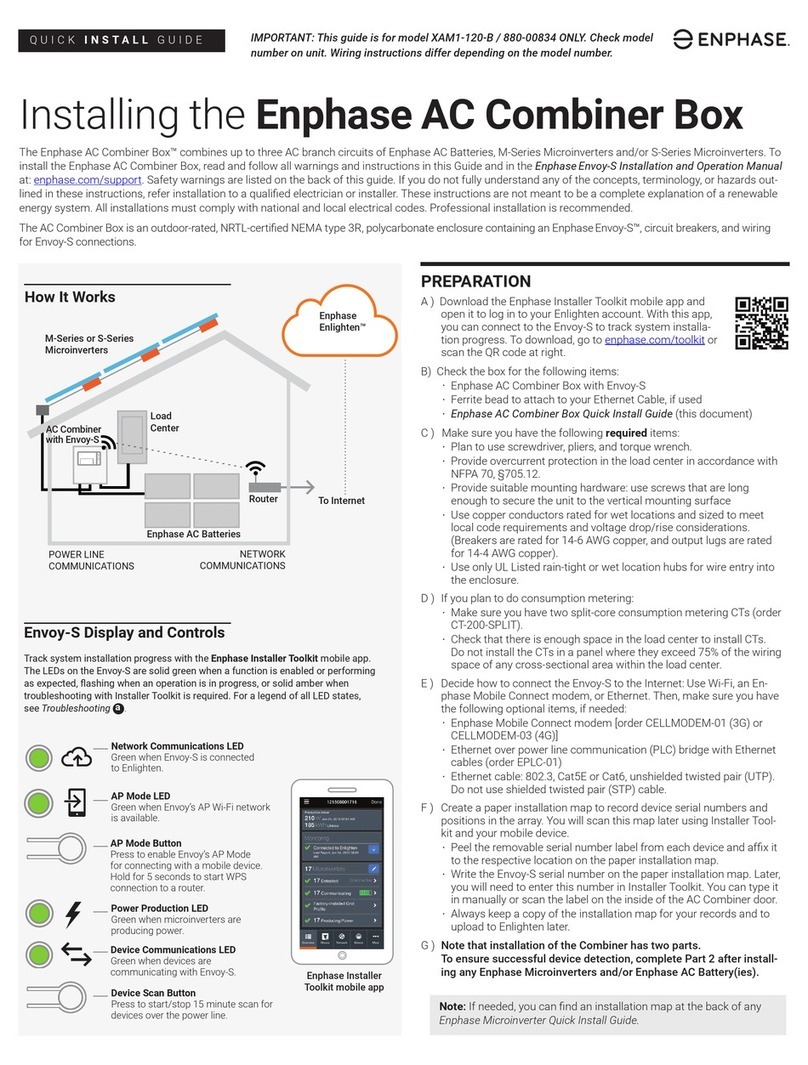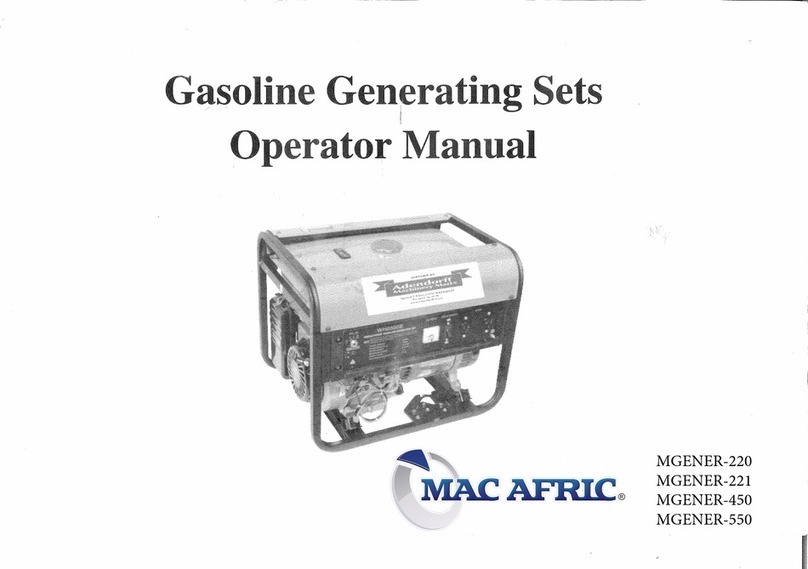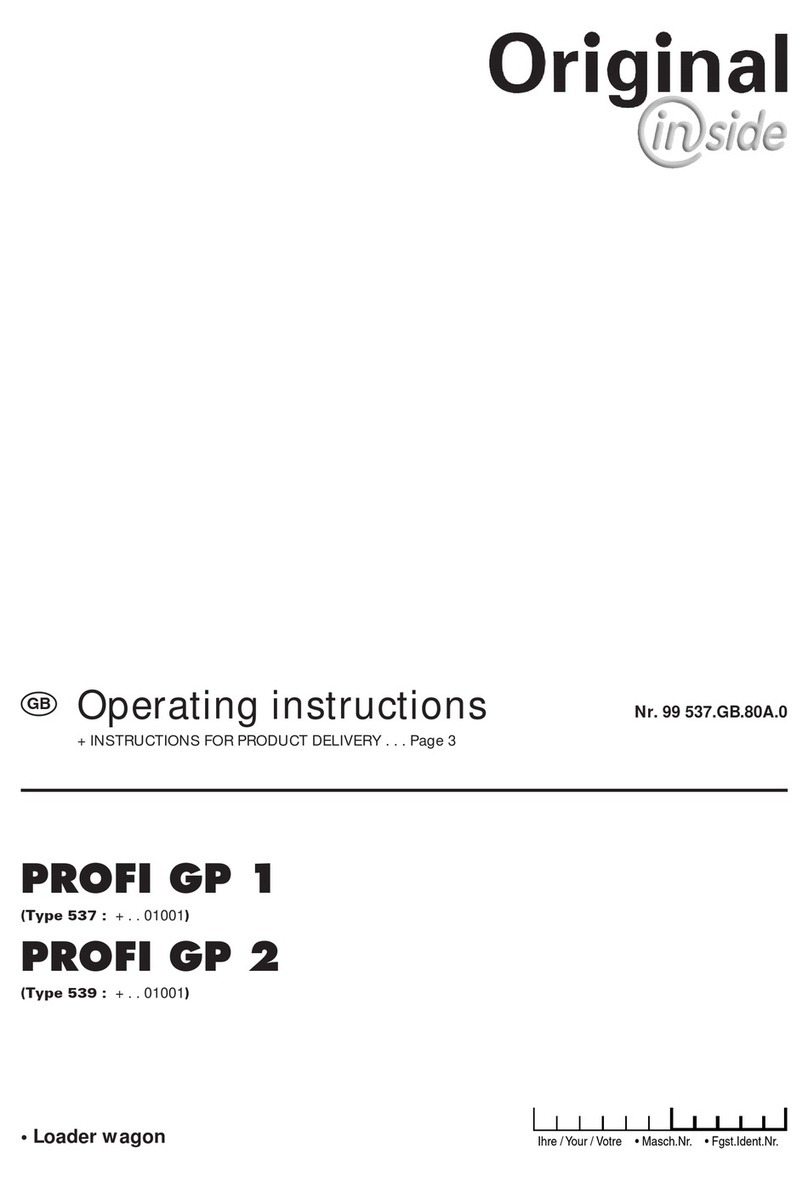FE FRENIC-Mini User manual

Instruction Manual
Compact Inverter
Three-phase 200 V series: FRN0001 to 0020C2S-2
Three-phase 400 V series: FRN0002 to 0011C2S-4
Single-phase 200 V series: FRN0001 to 0012C2S-7
Thank you for purchasing our FRENIC-Mini series of inverters.
• This product is designed to drive a three-phase induction motor and three-phase permanent
magnet synchronous motor. Read through this instruction manual and be familiar with the
handling procedure for correct use.
• Improper handling might result in incorrect operation, a short life, or even a failure of this
product as well as the motor.
• Deliver this manual to the end user of this product. Keep this manual in a safe place until this
product is discarded.
• For instructions on how to use an optional device, refer to the instruction and installation
manuals for that optional device.
Fuji Electric Co., Ltd. INR-SI47-1729a-E

Copyright © 2013 Fuji Electric Co., Ltd.
All rights reserved.
No part of this publication may be reproduced or copied without prior written permission from Fuji
Electric Co., Ltd.
All products and company names mentioned in this manual are trademarks or registered trademarks
of their respective holders.
The information contained herein is subject to change without prior notice for improvement.

i
Table of Contents
Preface .............................................................iii
Safety precautions................................................iv
Conformity to the Low Voltage Directive in the EU...ix
Precautions for use...............................................xi
How this manual is organized ................................xiv
Chapter 1 BEFORE USING THE INVERTER....1-1
1.1 Acceptance Inspection .............................. 1-1
1.2 External Views...........................................1-2
1.3 Transportation ........................................... 1-2
1.4 Storage Environment.................................1-3
1.4.1 Temporary storage............................ 1-3
1.4.2 Long-term storage.............................1-3
Chapter 2 MOUNTING AND WIRING OF THE
INVERTER........................................ 2-1
2.1 Operating Environment .............................2-1
2.2 Installing the Inverter.................................2-1
2.3 Wiring........................................................2-2
2.3.1 Removing and mounting the terminal
block covers...................................... 2-2
2.3.2 Terminal arrangement and screw
specifications....................................2-3
2.3.3 Recommended wire sizes.................2-4
2.3.4 Wiring precautions............................ 2-6
2.3.5 Wiring for main circuit terminals and
grounding terminals .......................... 2-7
2.3.6 Wiring for control circuit terminals... 2-11
2.3.7 Setting up the jumper switches.......2-18
2.3.8 Cautions relating to harmonic
component, noise, and leakage
current.............................................2-20
Chapter 3 OPERATION USING THE KEYPAD .3-1
3.1 Names and Functions of Keypad
Components..............................................3-1
3.2 Overview of Operation Modes...................3-2
3.3 Running mode........................................... 3-4
3.3.1 Monitoring the running status............3-4
3.3.2 Setting up reference frequency and
PID process command......................3-5
3.3.3 Running/stopping the motor.............. 3-7
3.4 Programming mode...................................3-8
3.4.1 Setting up the function codes
– "Data Setting"............................... 3-10
3.4.2 Checking changed function codes
– "Data Checking"...........................3-13
3.4.3 Monitoring the running status
– "Drive Monitoring"........................ 3-15
3.4.4 Checking I/O signal status
– "I/O Checking"..............................3-19
3.4.5 Reading maintenance information
– "Maintenance Information"...........3-23
3.4.6 Reading alarm information
– "Alarm Information"......................3-26
3.5 Alarm mode............................................. 3-29
Chapter 4 RUNNING THE MOTOR ...................4-1
4.1 Test Run.....................................................4-1
4.1.1 Checking prior to powering on...........4-1
4.1.2 Powering ON and checking...............4-1
4.1.3 Preparation before a test run
--Configuring function code data........4-2
4.1.4 Test run..............................................4-5
4.2 Operation...................................................4-5
4.2.1 Jogging Operation.............................4-6
Chapter 5 FUNCTION CODES..........................5-1
5.1 Function Code Tables ................................5-1
5.2 Details of Function Codes........................5-21
5.3 Notes in Driving PMSM............................5-78
Chapter 6 TROUBLESHOOTING ......................6-1
6.1 Before Proceeding with Troubleshooting ...6-1
6.2 If No Alarm Code Appears on the LED
Monitor.......................................................6-2
6.2.1 Abnormal motor operation.................6-2
6.2.2 Problems with inverter settings..........6-8
6.3 If an Alarm CodeAppears on the LED
Monitor.....................................................6-10
6.4 If an Abnormal PatternAppears on the
LED Monitor while No Alarm Code is
Displayed.................................................6-24
Chapter 7 MAINTENANCE AND INSPECTION .7-1
7.1 Daily Inspection..........................................7-1
7.2 Periodic Inspection.....................................7-1
7.3 List of Periodical Replacement Parts.........7-3
7.3.1 Judgment on service life....................7-4
7.4 Measurement of ElectricalAmounts in
Main Circuit................................................7-6
7.5 Insulation Test............................................7-8
7.6 Inquiries about Product and Guarantee.....7-9
7.6.1 When making an inquiry....................7-9
7.6.2 Product warranty ...............................7-9
Chapter 8 SPECIFICATIONS.............................8-1
8.1 Standard Models........................................8-1
8.1.1 Three-phase 200 V class series........8-1
8.1.2 Three-phase 400 V class series........8-2
8.1.3 Single-phase 200 V class series .......8-3
8.2 Common Specifications .............................8-4
8.3 Terminal Specifications ..............................8-7
8.3.1 Terminal functions..............................8-7
8.3.2 Connection diagram in operation
by external signal inputs....................8-7
8.4 External Dimensions..................................8-9
8.4.1 Standard models................................8-9
8.5 Protective Functions ................................8-11
Chapter 9 LIST OF PERIPHERAL
EQUIPMENT AND OPTIONS............9-1
Chapter 10 APPLICATION OF DC
REACTORS (DCRs)........................10-1

ii
Chapter 11 COMPLIANCE WITH STANDARDS..11-1
11.1 Compliance with European Standards .....11-1
11.2 Compliance with EMC Standards.............11-2
11.2.1 General............................................11-2
11.2.2 Recommended installation
procedure.........................................11-2
11.2.3 Leakage current of EMC-complaint
filter (optional)..................................11-4
11.3 Harmonic Component Regulation in the
EU11-5
11.3.1 General comments...........................11-5
11.3.2 Compliance with the harmonic
component regulation......................11-6
11.4 Compliance with the Low Voltage
Directive in the EU....................................11-6
11.4.1 General............................................11-6
11.4.2 Points for consideration when using
the FRENIC-Mini series in a system
to be certified by the Low Voltage
Directive in the EU...........................11-6

iii
Preface
Thank you for purchasing our FRENIC-Mini series of inverters.
This product is designed to drive a three-phase induction motor and three-phase permanent magnet
synchronous motor (PMSM). Read through this instruction manual and be familiar with proper han-
dling and operation of this product.
Improper handling might result in incorrect operation, a short life, or even a failure of this product as
well as the motor.
Have this manual delivered to the end user of this product. Keep this manual in asafe place until this
product is discarded.
Listed below are the other materials related to the use of the FRENIC-Mini. Read them in conjunction
with this manual as necessary.
• FRENIC-Mini User's Manual (24A7-E-0023)
• RS-485 Communication User's Manual (MEH448)
• Catalog (24A1-E-0011)
The materials are subject to change without notice. Be sure to obtain the latest editions for use.
Japanese Guideline for Suppressing Harmonics in Home Electric and Gen-
eral-purpose Appliances
Fuji three-phase 200 V class series of inverters with a capacity of 3.7 (4.0) kW or less, single-phase
200 V class series with 2.2 kW or less, and single-phase 100 V class series with 0.75 kW or less
were once subject to the "Japanese Guideline for Suppressing Harmonics in Home Electric and
General-purpose Appliances" (established in September 1994 and revised in October 1999), pub-
lished by the Ministry of International Trade and Industry (currently the Ministry of Economy, Trade
and Industry (METI)).
Since the revision of the guideline in January 2004, however, these inverters have no longer been
subject to the guideline. The individual inverter manufacturers have voluntarily employed harmonics
suppression measures.
As our measure, it is recommended that DC reactors (DCRs) authorized in this manual be con-
nected to the FRENIC-Mini series of inverters.
When using DCRs not authorized in this manual, however, consult your Fuji Electric representative
for the detailed specifications.
Japanese Guideline for Suppressing Harmonics by Customers Receiving
High Voltage or Special High Voltage
Refer to the FRENIC-Mini User's Manual (24A7-E-0023),Appendix C for details on this guideline.

iv
Safety precautions
Read this manual thoroughly before proceeding with installation, connections (wiring), operation, or
maintenance and inspection. Ensure you have sound knowledge of the device and familiarize
yourself with all safety information and precautions before proceeding to operate the inverter.
Safety precautions are classified into the following two categories in this manual.
Failure to heed the information indicated by this symbol may
lead to dangerous conditions, possibly resulting in death or
serious bodily injuries.
Failure to heed the information indicated by this symbol may
lead to dangerous conditions, possibly resulting in minor or
light bodily injuries and/or substantial property damage.
Failure to heed the information contained under the CAUTION title can also result in serious con-
sequences. These safety precautions are of utmost importance and must be observed at all times.
Application
• FRENIC-Mini is designed to drive a three-phase induction motor and three-phase per-
manent magnet synchronous motor (PMSM). Do not use it for single-phase motors or for
other purposes.
Fire or an accident could occur.
• FRENIC-Mini may not be used for a life-support system or other purposes directly related
to the human safety.
• Though FRENIC-Mini is manufactured under strict quality control, install safety devices for
applications where serious accidents or material losses are foreseen in relation to the
failure of it.
An accident could occur.
Installation
• Install the inverter on a nonflammable material such as metal.
Otherwise fire could occur.
• Do not place flammable matter nearby.
Doing so could cause fire.

v
• Do not support the inverter by its terminal block cover during transportation.
Doing so could cause a drop of the inverter and injuries.
• Prevent lint, paper fibers, sawdust, dust, metallic chips, or other foreign materials from
getting into the inverter or from accumulating on the heat sink.
Otherwise, a fire or an accident might result.
• Do not install or operate an inverter that is damaged or lacking parts.
Doing so could cause fire, an accident or injuries.
• Do not get on a shipping box.
• Do not stack shipping boxes higher than the indicated information printed on those boxes.
Doing so could cause injuries.
Wiring
• When wiring the inverter to the power source, insert a recommended molded case circuit
breaker (MCCB) or residual-current-operated protective device (RCD)/earth leakage
circuit breaker (ELCB) (with overcurrent protection) in the path of power lines. Use the
devices within the recommended current range.
• Use wires in the specified size.
• When wiring the inverter to the power supply of 500 kVA or more, be sure to connect an
optional DC reactor (DCR).
Otherwise, fire could occur.
• Do not use one multicore cable in order to connect several inverters with motors.
• Do not connect a surge killer to the inverter's output (secondary) circuit.
Doing so could cause fire.
• Be sure to connect the grounding wires without fail.
Otherwise, electric shock or fire could occur.
• Qualified electricians should carry out wiring.
• Be sure to perform wiring after turning the power off.
• Ground the inverter in compliance with the national or local electric code.
Otherwise, electric shock could occur.
• Be sure to perform wiring after installing the inverter body.
Otherwise, electric shock or injuries could occur.
• Ensure that the number of input phases and the rated voltage of the product match the
number of phases and the voltage of the AC power supply to which the product is to be
connected.
Otherwise fire or an accident could occur.
• Do not connect the power source wires to output terminals (U, V, and W).
• Do not insert a braking resistor between terminals P (+) and N (-), P1 and N (-), P (+) and
P1, DB and N (-), or P1 and DB.
Doing so could cause fire or an accident.

vi
• Generally, control signal wires are not reinforced insulation. If they accidentally touch any
of live parts in the main circuit, their insulation coat may break for any reasons. In such a
case, an extremely high voltage may be applied to the signal lines. Make a complete
remedy to protect the signal line from contacting any hot high voltage lines.
Doing so could cause an accident or electric shock.
• Wire the three-phase motor to terminals U, V, and W of the inverter, aligning phases each
other.
Otherwise injuries could occur.
• The inverter, motor and wiring generate electric noise. Take care of malfunction of the
nearby sensors and devices. To prevent the motor from malfunctioning, implement noise
control measures.
Otherwise an accident could occur.
Operation
• Be sure to install the terminal block cover before turning the power on. Do not remove the
cover while power is applied.
Otherwise electric shock could occur.
• Do not operate switches with wet hands.
Doing so could cause electric shock.
• If the retry functionhas been selected, the inverter may automaticallyrestart and drive the
motor depending on the cause of tripping.
(Design the machinery or equipment so that human safety is ensured after restarting.)
• If the stall prevention function (current limiter), automatic deceleration, and overload
prevention control have been selected, the inverter may operate at an accelera-
tion/deceleration time orfrequencydifferent from the set ones. Design the machine so that
safety is ensured even in such cases.
Otherwise an accident could occur.
• The STOP key is only effective when function setting (Function code F02) has been es-
tablished to enable the STOP key. Prepare an emergency stop switch separately. If you
disable the STOP key priority function and enable operation by external commands, you
cannot emergency-stop the inverter using the STOP key on the built-in keypad.
• If an alarm reset is made with the operation signal turned on, a sudden start will occur.
Ensure that the operation signal is turned off in advance.
Otherwise an accident could occur.

vii
• If you enable the "restart mode after momentary power failure" (Function code F14 = 4 or
5), then the inverter automatically restarts running the motor when the power is recovered.
(Design the machinery or equipment so that human safety is ensured after restarting.)
• If you set the function codes wrongly or without completely understanding this instruction
manual and the FRENIC-Mini User's Manual, the motor may rotate with a torque or at a
speed not permitted for the machine.
An accident or injuries could occur.
• Do not touch the inverter terminals while the power is applied to the inverter even if the
inverter stops.
Doing so could cause electric shock.
• Do not turn the main circuit power on or off in order to start or stop inverter operation.
Doing so could cause failure.
• Do not touch the heat sink or braking resistor because they become very hot.
Doing so could cause burns.
• Setting the inverter to high speeds is easy. Before changing the frequency(speed) setting,
check the specifications of the motor and machinery.
• The brake function of the inverter does not provide mechanical holding means.
Injuries could occur.
Maintenance and inspection, and parts replacement
• Turn the power off and wait for at least five minutes before starting inspection. Further,
check that the LED monitor is unlit, and check the DC link bus voltage between the P (+)
and N (-) terminals to be lower than 25 VDC.
Otherwise, electric shock could occur.
• Maintenance, inspection, and parts replacement should be made only by qualified per-
sons.
• Take off the watch, rings and other metallic matter before starting work.
• Use insulated tools.
Otherwise, electric shock or injuries could occur.

viii
Disposal
• Handle the inverter as an industrial waste when disposing of it.
Otherwise injuries could occur.
Others
• Never attempt to modify the inverter.
Doing so could cause electric shock or injuries.
GENERAL PRECAUTIONS
Drawings in this manual may be illustrated without covers or safety shields for explanation of
detail parts. Restore the covers and shields in the original state and observe the description in
the manual before starting operation.

ix
Conformity to the Low Voltage Directive in the EU
If installed according to the guidelines given below, inverters marked with CE are considered as
compliant with the Low Voltage Directive 2006/95/EC.
1. The ground terminal G should always be connected to the ground. Do not use only a
residual-current-operated protective device (RCD)/earth leakage circuit breaker (ELCB)* as
the sole method of electric shock protection. Be sure to use ground wires whose size is
greater than power supply lines.
* With overcurrent protection.
2. When used with the inverter, a molded case circuit breaker (MCCB), resid-
ual-current-operated protective device (RCD)/earth leakage circuit breaker (ELCB) or
magnetic contactor (MC) should conform to the EN or IEC standards.
3. When you use a residual-current-operated protective device (RCD)/earth leakage circuit
breaker (ELCB) for protection from electric shock in direct or indirect contact power lines or
nodes, be sure to install type B of RCD/ELCB on the input (primary) of the inverter if the
power source is three-phase 200/400 V. For single-phase 200 V power supplies, use type
A.
When you use no RCD/ELCB, take any other protective measure that isolates the electric
equipment from other equipment on the same power supply line using double or reinforced
insulation or that isolates the power supply lines connected to the electric equipment using
an isolation transformer.
4. The inverter should be used in an environment that does not exceed Pollution Degree 2
requirements. If the environment conforms to Pollution Degree 3 or 4, install the inverter in
an enclosure of IP54 or higher.
5. Install the inverter, AC or DC reactor, input or output filter in an enclosure with minimum
degree of protection of IP2X (Top surface of enclosure shall be minimum IP4X when it can
be easily accessed), to prevent human body from touching directly to live parts of these
equipment.
6. To make an inverter with no integrated EMC filter conform to the EMC directive, it is nec-
essary to connect an external EMC filter to the inverter and install them properly so that the
entire equipment including the inverter conforms to the EMC directive.
7. Do not connect any copper wire directlyto grounding terminals. Use crimp terminals with tin
or equivalent plating to connect them.
8. To connect the three-phase or single-phase 200 V class series of inverters to the power
supply in Overvoltage Category III or to connect the three-phase 400 V class series of in-
verters to the power supply in Overvoltage Category II or III, a supplementary insulation is
required for the control circuitry.
9. When using inverters at an altitude of more than 2000 m, note that the basic insulation
applies to the insulation degree of the control circuitry. At an altitude of more than 3000 m,
inverters cannot be used.
10. The power supply mains neutral has to be earthed for the three-phase 400 V class inverter.
11. The inverter has been tested with IEC61800-5-1 2007 5.2.3.6.3 Short-circuit Current Test
under the following conditions.
Short-circuit current in the supply: 10 kA
Maximum 240 V
Maximum 480 V

x
Conformity to the Low Voltage Directive in the EU (Continued)
12. Use wires listed in IEC60364-5-52.
MCCB: Molded case circuit breaker
RCD: Residual-current-operated protective device
ELCB: Earth leakage circuit breaker
Note: A box () in the above table replaces A, C, E, or U depending on the shipping destination. For
three-phase 200 V class series of inverters, it replaces Aor U.
*4.0 kW for the EU. The inverter type is FRN0011C2S-4E.
*1 The frame size and model of the MCCB or RCD/ELCB (with overcurrent protection) will vary,
depending on the power transformer capacity. Refer to the related technical documentation for
details.
*2 The recommended wire size for main circuits is for the 70°C 600V PVC wires used at an ambient
temperature of 40°C.
*3 In the case of no DC reactor, the wire sizes are determined on the basis of the effective input
current calculated under the condition that the power supply capacity and impedance are 500 kVA
and 5%, respectively.
Recommended wire size (mm2 )
*1
Rated current (A)
of
MCCB or RCD/ELCB
*2
Main circuit
power input
[L1/R, L2/S, L3/T]
[L1/L, L2/N]
Grounding [ G]
Power supply voltage
Appli-
cable
motor
rating
(kW)
Inverter type
w/ DCR *3
w/o DCR
w/ DCR *3
w/o DCR
*2
Inverter
output
[U, V,
W]
*2
DCR
[P1,
P (+)]
Braking
resistor
[P (+),
DB]
Control
circuit
(30A,
30B,
30C)
0.1 FRN0001C2S-2□
0.2 FRN0002C2S-2□
0.4 FRN0004C2S-2□
6
0.75 FRN0006C2S-2□
6
10
1.5 FRN0010C2S-2□16
2.2 FRN0012C2S-2□10 20
2.5 2.5
Three-phase 200 V
3.7 FRN0020C2S-2□20 35
2.5
4 4
2.5 0.5
0.4 FRN0002C2S-4□
0.75 FRN0004C2S-4□6
1.5 FRN0005C2S-4□
6
10
2.2 FRN0007C2S-4□16
Three-phase 400 V
3.7
(4.0)* FRN0011C2S-4□10 20
2.5 2.5 2.5 2.5 0.5
0.1 FRN0001C2S-7□
0.2 FRN0002C2S-7□6
0.4 FRN0004C2S-7□
6
10
0.75 FRN0006C2S-7□10 16
2.5
1.5 FRN0010C2S-7□16 20
2.5
4
2.5
Single-phase 200 V
2.2 FRN0012C2S-7□20 35 4 6
2.5
4
0.5

xi
Precautions for use
Driving a 400 V
general-purpose
motor
When driving a 400 V general-purpose motor with aninverter
using extremely long wires, damage to the insulation of the
motor may occur. Use an output circuit filter (OFL) if neces-
sary after checking with the motor manufacturer. Fuji motors
do not require the use of output circuit filters because of their
good insulation.
Torque charac-
teristics and
temperature rise
When the inverter is used to run a general-purpose motor, the
temperature of the motor becomes higher than when it is
operated using a commercial power supply. In the low-speed
range, the cooling effect will be weakened, so decrease the
output torque of the motor. If constant torque is required in
the low-speed range, use a Fuji inverter motor or a motor
equipped with an externally powered ventilating fan.
Vibration
When an inverter-driven motor is mounted to a machine,
resonance may be caused by the natural frequencies of the
machine system.
Note that operation of a 2-pole motor at 60 Hz or higher may
cause abnormal vibration.
* The use of a rubber coupling or vibration dampening rubber
is recommended.
* Use the inverter's jump frequency control feature to skip
the resonance frequency zone(s).
In running
general-
purpose
motors
Noise
When an inverter is used with a general-purpose motor, the
motor noise level is higher than that with a commercial power
supply. To reduce noise, raise carrier frequency of the in-
verter. Operation at 60 Hz or higher can also result in higher
noise level.
High-speed mo-
tors If the reference frequency is set to 120 Hz or more to drive a
high-speed motor, test-run the combination of the inverter
and motor beforehand to check for safe operation.
Explosion-proof
motors When driving an explosion-proof motor with an inverter, use a
combination of a motor and an inverter that has been ap-
proved in advance.
Submersible mo-
tors and pumps
These motors have a larger rated current than gen-
eral-purpose motors. Select an inverter whose rated output
current is greater than that of the motor.
These motors differ from general-purpose motors in thermal
characteristics. Set a low value in the thermal time constant
of the motor when setting the electronic thermal function.
In running
special mo-
tors
Brake motors
For motors equipped with parallel-connected brakes, their
braking power must be supplied from the input (primary)
circuit. If the brake power is connected to the inverter's output
(secondary) circuit by mistake, the brake will not work.
Do not use inverters for driving motors equipped with se-
ries-connected brakes.

xii
Geared motors If the power transmission mechanism uses an oil-lubricated
gearbox or speed changer/reducer, then continuous motor
operation at low speed may cause poor lubrication. Avoid
such operation.
Synchronous mo-
tors It is necessary to take special measures suitable for this
motor type. For details about the PMSM drive, refer to Chapter 5,
Section 5.3 "Notes in Driving PMSM."
In running
special
motors
Single-phase
motors
Single-phase motors are not suitable for inverter-driven
variable speed operation. Use three-phase motors.
* Even if a single-phase power supply is available, use a
three-phase motor as the inverter provides three-phase
output.
Environ-
mental
conditions
Installation loca-
tion
The heat sink and braking resistor of the inverter may be-
come hot under certain operating conditions, so install the
inverter on nonflammable material such as metal.
Ensure that the installation location meets the environmental
conditions specified in Chapter 2, Section 2.1 "Operating
Environment."
Installing an
MCCB or
RCD/ELCB
Install a recommended molded case circuit breaker (MCCB)
or residual-current-operated protective device (RCD)/earth
leakage circuit breaker (ELCB) (with overcurrent protection)
in the input (primary) circuit of the inverter to protect the
wiring. Do not use the circuit breaker capacity exceeding the
recommended rated current.
Installing an MC
in the secondary
circuit
If a magnetic contactor (MC) is mounted in the inverter's
secondary circuit for switching the motor to commercial
power or for any other purpose, ensure that both the inverter
and the motor are completely stopped before you turn the MC
on or off.
Do not connect a magnet contactor united with a surge killer
to the inverter's secondary circuit.
Installing an MC
in the primary
circuit
Do not turn the magnetic contactor (MC) inthe input (primary)
circuit on or off more than once an hour as an inverter failure
may result.
If frequent starts or stops are required during motor opera-
tion, use FWD/REV signals or the / keys.
Combina-
tion with
peripheral
devices
Protecting the
motor
The electronic thermal function of the inverter can protect the
motor. The operation level and the motor type (gen-
eral-purpose motor, inverter motor) should be set. For
high-speed motors or water-cooled motors, set a small value
for the thermal time constant and protect the motor.
If you connect the motor thermal relay to the motor with a
long wire, a high-frequency current may flow into the wiring
stray capacitance. This may cause the relay to trip at a cur-
rent lower than the set value for the thermal relay. If this
happens, lower the carrier frequency or use the output circuit
filter (OFL).

xiii
Discontinuance
of power-factor
correcting ca-
pacitor
Do not mount power-factor correcting capacitors in the in-
verter’s primary circuit. (Use the DC reactor to improve the
inverter power factor.) Do not use power-factor correcting
capacitors in the inverter output circuit. An overcurrent trip
will occur, disabling motor operation.
Discontinuance
of surge killer Do not connect a surge killer to the inverter's secondary
circuit.
Reducing noise Use ofa filter and shielded wires istypically recommended to
satisfy EMC directives.
Measures against
surge currents
If an overvoltage trip occurs while the inverter is stopped or
operated under a light load, it is assumed that the surge
current is generated by open/close of the phase-advancing
capacitor in the power system.
* Connect a DC reactor to the inverter.
Combina-
tion with
peripheral
devices
Megger test When checking the insulation resistance of the inverter, use a
500 V Megger and follow the instructions contained in
Chapter 7, Section 7.5 "Insulation Test."
Control circuit
wiring length
When using remote control, limit the wiring length between
the inverter and operator box to 20 m or less and use twisted
pair or shielded cable.
Wiring length
between inverter
and motor
If long wiring is used between the inverter and the motor, the
inverter will overheat or trip as a result of overcurrent
(high-frequency current flowing into the stray capacitance) in
the wires connected to the phases. Ensure that the wiring is
shorter than 50 m. If this length must be exceeded, lower the
carrier frequency or mount an output circuit filter (OFL).
Wiring size Select wires with a sufficient capacity by referring to the
current value or recommended wire size.
Wiring type Do not use one multicore cable in order to connect several
inverters with motors.
Wiring
Grounding Securely ground the inverter using the grounding terminal.
Driving gen-
eral-purpose
motor
Select an inverter according to the nominal applied motor
listed in the standard specifications table for the inverter.
When high starting torque is required or quick acceleration or
deceleration is required, select an inverter with a capacity
one size greater than the standard.
Selecting
inverter
capacity
Driving special
motors Select an inverter that meets the following condition:
Inverter rated current > Motor rated current
Transpor-
tation and
storage
When exporting an inverter built in a panel or equipment, pack them in a previously
fumigated wooden crate. Do not fumigate them after packing since some parts
inside the inverter may be corroded by halogen compounds such as methyl bro-
mide used in fumigation.
When packing an inverter alone for export, use a laminated veneer lumber (LVL).
For other transportation and storage instructions, see Chapter 1, Section 1.3
"Transportation" and Section 1.4 "Storage Environment."

xiv
How this manual is organized
This manual is made up of chapters 1 through 11.
Chapter 1 BEFORE USING THE INVERTER
This chapter describes acceptance inspection and precautions for transportation and storage of the
inverter.
Chapter 2 MOUNTING AND WIRING OF THE INVERTER
This chapter provides operating environment, precautions for installing the inverter, wiring instruc-
tions for the motor and inverter.
Chapter 3 OPERATION USING THE KEYPAD
This chapter describes inverter operation using the keypad. The inverter features three operation
modes (Running, Programming and Alarm modes) which enable you to run and stop the motor,
monitor running status, set function code data, display running information required for maintenance,
and display alarm data.
Chapter 4 OPERATION
This chapter describes preparation to be made before running the motor for a test and practical
operation.
Chapter 5 FUNCTION CODES
This chapter provides a list of the function codes. Functioncodes to be used often and irregular ones
are described individually.
Chapter 6 TROUBLESHOOTING
This chapter describes troubleshooting procedures to be followed when the inverter malfunctions or
detects an alarm condition. In this chapter, first check whether any alarm code is displayed or not,
and then proceed to the troubleshooting items.
Chapter 7 MAINTENANCE AND INSPECTION
This chapter describes inspection, measurement and insulation test which are required for safe
inverter operation. It also provides information about periodical replacement parts and guarantee of
the product.
Chapter 8 SPECIFICATIONS
This chapter lists specifications including output ratings, control system, external dimensions and
protective functions.
Chapter 9 LIST OF PERIPHERAL EQUIPMENT AND OPTIONS
This chapter describes main peripheral equipment and options which can be connected to the
FRENIC-Mini series of inverters.
Chapter 10 APPLICATION OF DC REACTOR (DCRs)
This chapter describes a DC reactor that suppresses input harmonic component current.
Chapter 11 COMPLIANCE WITH STANDARDS
This chapter describes standards with which the FRENIC-Mini series of inverters comply.

xv
Icons
The following icons are used throughout this manual.
This icon indicates information which, if not heeded, can result in the inverter not operating
to full efficiency, as well as information concerning incorrect operations and settings which
can result in accidents.
This icon indicates information that can prove handy when performing certain settings o
r
operations.
This icon indicates a reference to more detailed information.

1-1
Chapter 1 BEFORE USING THE INVERTER
1.1 Acceptance Inspection
Unpack the package and check that:
(1) An inverter and instruction manual (this manual) are contained in the package.
(2) The inverter has not been damaged during transportation—there should be no dents or parts
missing.
(3) The inverter is themodel you ordered. You can check the model name and specifications on the
main nameplate. (Main and sub nameplates are attached to the inverter and are located as
shown on the next page.)
(a) Main Nameplate (b) Sub Nameplate
Figure 1.1 Nameplates
TYPE: Type of inverter
SOURCE: Number of input phases (three-phase: 3PH, single-phase: 1PH), input voltage, input
frequency, input current
OUTPUT: Number of output phases, rated output capacity, rated output voltage, output
frequency range, rated output current, and overload capacity
SER. No.: Product number Manufacturing date
W 3 3 A 1 2 3A 0 0 0 1AA 3 2 0
Production week
This indicates the week number that is
numbered from 1st week of January.
The 1st week of January is indicated as
'01'.
Production year: Last digit of year
If you suspect the product is not working properly or if you have any questions about your product,
contact your Fuji Electric representative.

1-2
1.2 External Views
(1) External views
Figure 1.2 External Views of FRENIC-Mini
(2) Wiring section
(a) FRN0006C2S-2(b) FRN0010C2S-2
(* When connecting the RS-485 communications cable, remove the control circuit terminal block cover and
cut off the barrier provided in it using nippers.)
Note: A box () in the above model names replaces A, C, E, or U depending on the shipping destination.
For three-phase 200 V class series of inverters, it replaces A or U.
Figure 1.3 Wiring Section
1.3 Transportation
• When carrying the inverter, always support its bottom at the front and rear sides with both hands.
Do not hold covers or individual parts only. You may drop the inverter or break it.
• Avoid applying excessively strong force to the terminal block covers as they are made of plastic
and are easily broken.
Barrier for the RS-485
communications port*
Control signal cable
port
Cooling
fan
L1/R, L2/S, L3/T, P1, P (+), N (-)
wire port
L1/R, L2/S, L3/T, U, V, W,
grounding wire port
DB, U, V, W,
grounding wire port
DB, P1, P (+) and N (-) wire port
Keypad
Main nameplate
Control circuit terminal bock cover
Control circuit
terminal block cove
r
Main circuit
terminal block
cover
Sub nameplate
Main nameplate

1-3
1.4 Storage Environment
1.4.1 Temporary storage
Store the inverter in an environment that satisfies the requirements listed in Table 1.1.
Table 1.1 Environmental Requirements for Storage and Transportation
Item Requirements
Storage
temperature *1-25 to +70°C
Relative
humidity 5 to 95% *2
Locations where the inverter is not
subject to abrupt changes in
temperature that would result in the
formation of condensation or ice.
Atmosphere The inverter must not be exposed to dust, direct sunlight, corrosive or flammable
gases, oil mist, vapor, water drops or vibration. The atmosphere can contain only a
low level of salt. (0.01 mg/cm2or less per year)
86 to 106 kPa (in storage)Atmospheric
pressure 70 to 106 kPa (during transportation)
*1Assuming a comparatively short storage period (e.g., during transportation or the like).
*2Even if the humidity is within the specified requirements, avoid such places where the inverter will be
subjected to sudden changes in temperature that will cause condensation to form.
Precautions for temporary storage
(1) Do not leave the inverter directly on the floor.
(2) If the environment does not satisfy the specified requirements listed in Table 1.1, wrap the
inverter in an airtight vinyl sheet or the like for storage.
(3) If the inverter is to be stored in an environment with a high level of humidity, put a drying agent
(such as silica gel) in the airtight package described in item (2).
1.4.2 Long-term storage
The long-term storage methods for the inverter vary largely according to the environment of the
storage site. General storage methods are described below.
(1) The storage site must satisfy the requirements specified for temporary storage.
However, for storage exceeding three months, the ambient temperature should be within the
range from -10 to +30°C. This is to prevent the electrolytic capacitors in the inverter from
deteriorating.
(2) The inverter must be stored in a package that is airtight to protect it from moisture. Include a
drying agent inside the package to maintain the relative humidity inside the package to within
70%.
(3) If the inverter has been installed in the equipment or control board at a construction site where it
may be subjected to humidity, dust or dirt, then remove the inverter and store it in a suitable
environment specified in Table 1.1.
Precautions for storage over 1 year
If the inverter will not be powered on for a long time, the property of the electrolytic capacitors may
deteriorate. Power the inverters on once a year and keep them on for 30 to 60 minutes. Do not
connect the inverters to motors or run the motor.
Table of contents
Other FE Inverter manuals
Popular Inverter manuals by other brands

Salicru
Salicru EQUINOX EQX2 2001-S user manual

We Care Solar
We Care Solar Suitcase WCS200 user manual
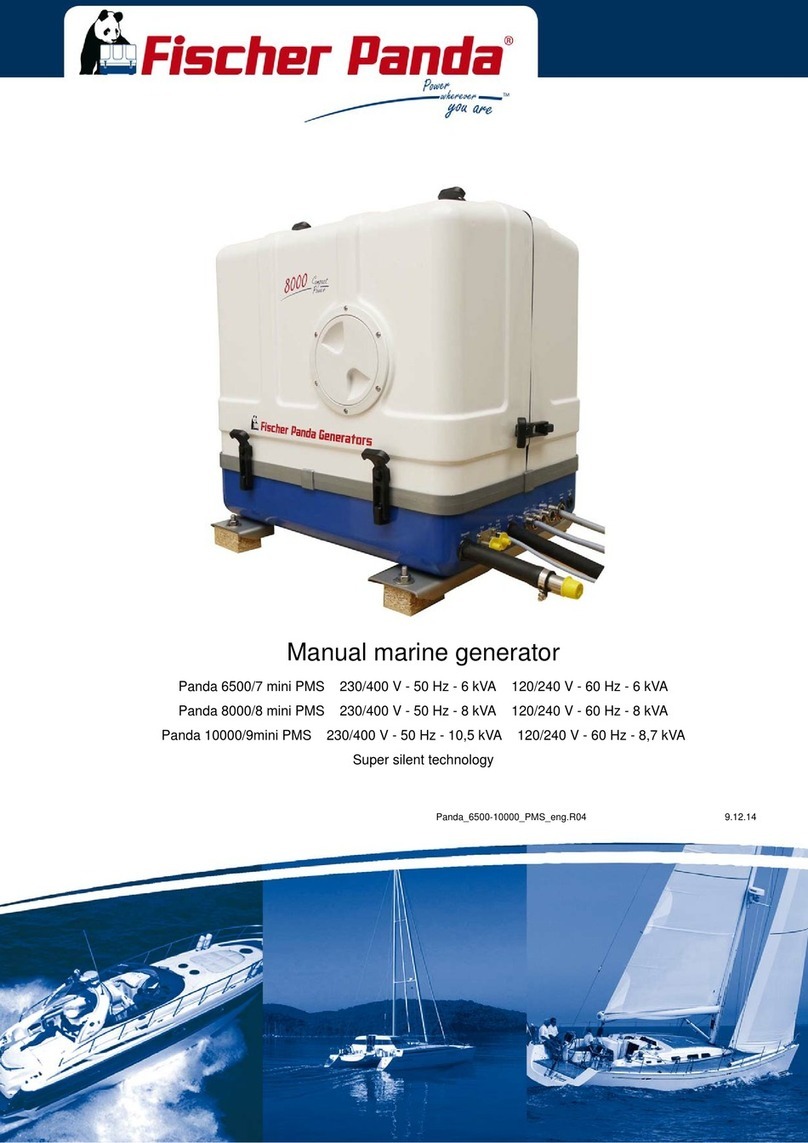
Fischer Panda
Fischer Panda 6500/7 manual

Growatt
Growatt MIC 600-3300TL-X quick guide

Matrix
Matrix DF1500H user manual

Southwest Windpower
Southwest Windpower 30 FOOT (9 Meter) TOWER KIT for WHISPER 500 owner's manual
